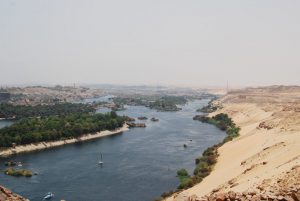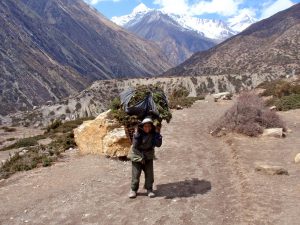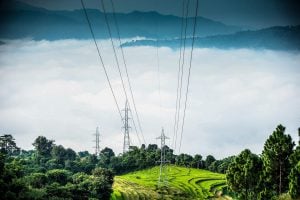More than 300 million people rely on the waters of the River Nile. The Nile river basin contains more than 10% of Africa’s landmass in 11 countries: Ethiopia, Sudan, South Sudan, Egypt, Rwanda, Tanzania, Uganda, Burundi, the Democratic Republic of Congo, Eritrea and Kenya. And many of these countries rely almost exclusively on the Nile as its source of freshwater.
Water demand throughout the region is expected to soar. This is on the back of rising populations as well as ambitious initiatives, particularly in Egypt and Ethiopia which have plans to develop hydroelectric power. The need for cooperative sustainable management of the trans-boundary water and related resources of the Basin has never been more compelling.
The Nile is one of more than 260 “international drainage basins” throughout the world where water and related resources are shared between two or more nation states.
Historically, vying for these scarce resources has been a source of friction and a catalyst for peace as nations are forced to work together. Disparate but successful examples of turning adversaries into improbable partners include the Indus Waters Treaty between India and Pakistan, which has survived three wars, and the Senegal River Treaty where four countries share joint ownership of water-related infrastructure. In these examples, finding a way to equitably and reasonably share international waters has been the key to success.
Grey Area

The UN Watercourses Convention requires every country sharing an international drainage basin to participate in its use, development and protection. But there is a grey area. The convention leaves it up to individual countries to negotiate what they see as equitable and reasonable. And despite many decades of concerted effort no comprehensive deal between all 11 countries has yet been reached in the case of the Nile River Basin. Meanwhile, tensions have continued to mount, including between Egypt and Ethiopia.
Both Egypt and Ethiopia are arguably more heavily dependent on the Nile River Basin than any other country. The Nile is functionally the only real source of water for Egypt. The preponderance of Egypt’s fast growing population lives in the Nile Valley, nearly all of whom are farmers who rely on the water to grow crops. Yet more than 80% of the water reaching Egypt comes from the Blue Nile, which originates in Ethiopia, whose population growth rate is equal to or greater than Egypt’s, establishing an equally compelling need for water for increased food production.
The urgency of reaching an agreement to reasonably and equitably share the benefits of the Nile Basin can’t be overstated. Apart from the need to manage a precious resource carefully, the very process of reaching cooperation would create a stabilising and more transparent atmosphere in the countries that depend on the Nile basin. It would widen political participation, build political stability and spread confidence between states. This is important given that the potential for friction will likely increase as the Nile faces new challenges.
New challenges
Fresh evidence now points to the fact that both the political and ecological situation in the Nile basin is becoming more precarious. Water quality appears to be worsening, there are growing water quantity issues and agricultural yields appear to be falling. These challenges are exacerbated by the looming completion of various dams on the Blue Nile and the White Nile. The biggest of these is the Grand Renaissance Dam in Ethiopia.
There are also new and increasing concerns over the potential impact of climate change on the Nile river basin. Recent studies point to two contradictory scenarios that would require completely opposite adaptation strategies: one entails floods and increased runoff, the other water scarcity and possible drought.
At least one study suggests that an increase in global temperatures will cause more evaporation, leading to greater water scarcity. Another suggests that increased evaporation in Egypt will cause more precipitation in the Ethiopian highlands. This could lead to increased runoff downstream, in Egypt, which may cause floods.
These uncertainties are intensified by the fact that most of the nation states sharing the Nile Basin are generally more likely to be increasingly “water scarce” by 2050. This is due to climate change and increased water demand due to population growth.
On top of all these challenges, many Nile countries – particularly Egypt and Ethiopia – continue to have ambitious plans to use more water, as well as develop hydroelectricity projects along the Nile. Egypt has embarked on the New Valley Project. This is designed to redirect almost 5 billion cubic metres of water to create and maintain an attractive, habitable area in the Western Desert. These developments underscore the need to successfully design institutions and legal frameworks, using adaptive management, for shared water resources.
Moving forward
There is no “one-size-fits-all” approach to these challenges, but what’s clear is that such agreements can protect the environment while also stabilising and enhancing security at the regional level.
It is now time for all 11 Nile sharing nations and the international development community to pull together. They must redouble their efforts to successfully establish and maintain a Nile Basin-wide cooperative framework agreement and a Nile Basin Commission. This is not a panacea for all that ails the Nile Basin but these initiatives would help the region focus on establishing a nascent international river basin organisation that could eventually embrace larger water and energy governance solutions.
This article first appeared on The Conversation.




![A Kashmiri man near a Budgam forest shows the degradation caused to forests over the past few decades [image by: Athar Parvaiz]](https://www.thethirdpole.net/content/uploads/2017/09/A-Kashmiri-man-near-a-Budgam-forest-shows-the-degradation-caused-to-firests-over-the-past-few-decades-Photo-__-Athar-Parvaiz--300x199.jpg)